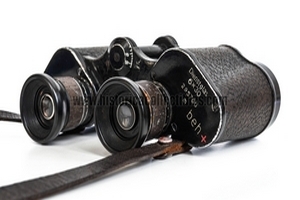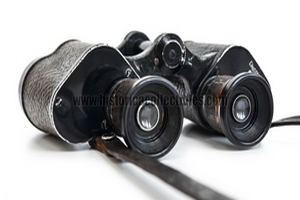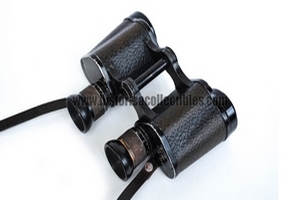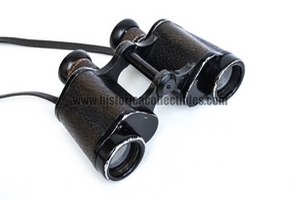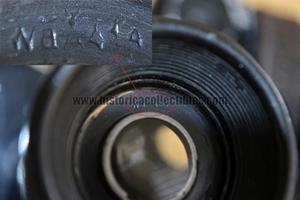Dienstglas BEH (Ernst Leitz) 6x30 m "Metrisches Gewinde", circa 1940
Very little we know, with certainty, about this rare Dienstglas 6x30 "beh" (m) binoculars, code name of the manufacturer "Ernst Leitz Wetzlar" (at the disposal of the Oberkommando der Wehrmacht), produced around 1940. What differentiates this binoculars from the other 6x30 (H/6400), intended for the German army (Wehrmacht) is the letter "m" shown in lowercase which, in German, is the abbreviation of "metrisches gewinde", translated into english "metric thread ".
This is a standardized measurement system. Next to the manufacturer's code name "beh" we find the "+" which indicates the type of grease used for the internal mechanisms and for anti-fog sealing of the lenses and prisms; grease capable of not changing its characteristics (does not solidify) up to temperatures of -40°.
So it is certain that these binoculars were intended for troops operating in territories where temperatures were extremely cold. Inside the eyepieces there is the Waffenamt stamp "WaA414" corresponding to (Hensoldt & Sohne Optische Werke A-G (Wetzlar, Germany).
The presence of this Waffenamt suggests the purchase of a batch of eyepieces by Leitz, precisely from Hensoldt, which supplied it with a small number. Likewise, let's not abandon the idea of thinking that the Waffenamt 414 was imprinted on certain batches of binoculars based on the authorization issued by the verification office, to a Hensoldt controller/inspector, who was responsible for certifying the production and quality of the binoculars Leitz. The serial number 295760 leads us to assume that these binoculars were produced around 1940.
The view is perfectly collimated, the focus is soft and precise, looking through, you see a very sharp and bright image. There is a graduated reticle inside the right eyepiece.
The Leitz company is a company operating in the optics sector. It was founded in 1869 by Ernst Leitz, known as Ernst Leitz I (1843-1920), as an 1849 successor to Carl Kellner's company, the Optical Institute, in Wetzlar.

